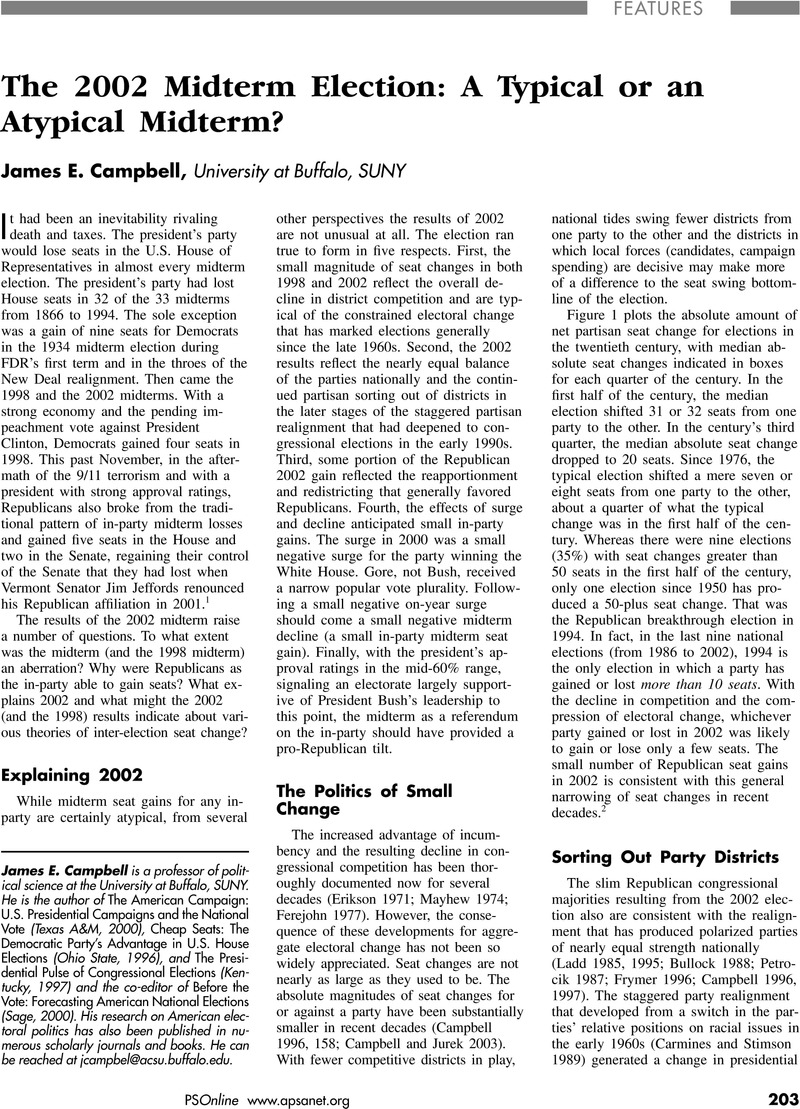Crossref Citations
This article has been cited by the following publications. This list is generated based on data provided by Crossref.
Burkhart, Simone
2005.
Parteipolitikverflechtung. Über den Einfluss der Bundespolitik auf Landtagswahlentscheidungen von 1976 bis 2000.
Politische Vierteljahresschrift,
Vol. 46,
Issue. 1,
p.
14.
Klarner, Carl
and
Buchanan, Stan
2006.
Forecasting the 2006 Elections for the U.S. House of Representatives.
PS: Political Science & Politics,
Vol. 39,
Issue. 04,
p.
857.





